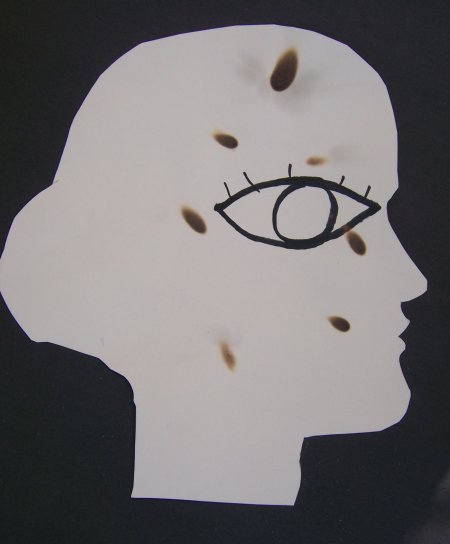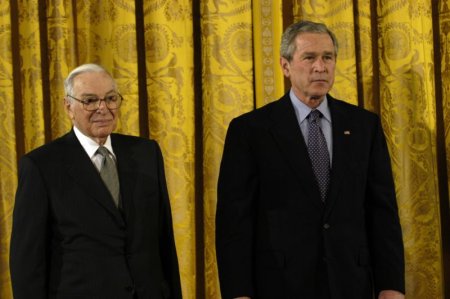Der richtige Fo kus
Thursday, May 3rd, 2007

“sich kreuzende Blicke”
randformblog on math, physics, art, and design |


“sich kreuzende Blicke”
An exhibition on mathematics is planned to open October 08 at the Deutsches Technik Museum Berlin. Fall 08 is still some time ahead but the website is already online:
Mathema exhibition
new scientist reported about tests performed on a recent conference in which radio networks are used for wireless communication, a feature commonly called cognitive radio.
With a grant from the Clay Math Institute Libraries without walls have scanned notebooks of Felix Klein (at the moment they are still labeled Fritz Klein protokolls there, but it seems obvious that they meant Felix Klein). The protokolls cover the mathematical colloquia he held at Göttingen, Erlangen, Munich and Leipzig and they are truly beautifull documents: You will find handwritten abstracts of many famous mathematicians of that time (the protocols are not course notes taken by a listener but short summaries of the lecures by the speakers themselves).
Rest of an Überraschungsei used for a pendulum
It is an interesting question how to approach big challenges. There exists the socalled Top-down and bottom-up design paradigma which is prevalent in computer programming but not only there. It appears also in math, where for example people study special examples (bottom-up)(like e.g. certain differential equations) as well as conceptional questions (top-down)(like e.g. construction of the number system via set theory). It is not only in programming useful to use both approaches. The top-down approach has often the advantage to detect conceptional connections, whereas the bottom-up approach has usually a better connection to applied problems. However sometimes also within the bottom-up approach unexpected connections may appear.
A funny connection between two more-or-less special applications is for example the fact that a discrete pendulum (a mathematical pendulum seen with a strobe light (and the classical counterpart of the quantum pendulum) can be identified with the movement of a ball in a billard with an elliptic shape (via certain coordinates, proof in my Ph.D. thesis). An ellipse is a generalized circle.
Another funny artistic mixture of these two concepts is the Oval with pendulum by Gabriel Orozco. (see also interview on pbs). I think I saw his elliptic billard table at the MAC in 2001, but I don’t remember wether it was part of a temporal exhibition or not and I couldn’t find too much information on the MAC online.
Currently Gabriel Orozco is busy with an equally interesting project. He and photographers Adam Broomberg + Oliver Chanarin and film maker Dustin Lynn are working on the first of several ‘mini missions’ to ‘ARTiculate™ some of the world’s most environmentally trashed regions with the end goal of then presenting work in response to their findings. (article on treehugger, the adventureecology website is a flash site so I cant link the information directly)
Last not least there exist of course the well-known connection between an ellipsoid or egg (3 dim analog of an ellipse) and a pendulum (see above image or e.g. this application for dowsing), but funnily a similar mixture of elliptic shapes and pendulum seems also to appear in astronomy. (?)
The use of color in sculpture is a very difficult issue–
![]()
manicone is online now. The coloring of manicone took more time than expected. The coloring made it necessary to consider theories and examples of artistic color compositions, physical mixing properties, technological limitations (calibrations) and infoesthetic basics (For a glimpse onto the problem of coloring and infoesthetics see e.g. this video lecture by tamara munzner (who was a visiting scientist of the TU math department in the mid nineties) or the review on pingmag.
It is a difficult question to find the right portion between colorful and colorful. Colors may be shouting. If they unfriendly shout you down then this is not acceptable. If the are too faint and disappear among the other colors then this is not acceptable either. Due to the transparency properties of manicone, color mixing was likewise an important question.

Kenneth Arrow and George Bush – Arrow receives the National Medal of Science, 2004
A previous randform post dealt with collective knowledges and in particular certain basic knowledges which were assumed to be connected with evolution. In the post it was asserted that collective knowledge may -among others- be hidden in the subconscious and that design/marketing may be a mean to detect something of it.
In this series of posts I haven’t yet really adressed the question of HOW a collective knowledge or preference assumes shape, but sofar rather focused on potentially involved mechanisms (maybe to be continued). And in fact the formation of collective preferences (related: the question of formation of coherence and focus) is a very, very difficult – but interesting – issue and this post here is only a first (and almost historical) glimpse into this matter.

Hospitals are often white in white. This doesn’t help to increase visibility for viruses and bacterias, but white has (at least in some cultures) the symbolic character of purity. However the traces of visitors on white walls need not necessarily be stain, they could be graffiti or art. A famous art example are the works of Robert Rauschenberg. (-> Link for some white Rauschenberg). From Wikipedia:
The “white paintings” produced by Rauschenberg at Black Mountain in 1951, while they contain no image at all, are said to be so exceptionally blank and reflective that their surfaces respond and change in sympathy with the ambient conditions in which they are shown, “so you could almost tell how many people are in the room,” as Rauschenberg once commented.
It is a plain observation that stylish western blogs (as seen from easteastBerlin) are currently often – very white. Concerned about our statistics and some critics about our oriental webdesign, we will follow this white trend for some days and make the vest or theme of our blog purely white and observe our statistics. We take this as a kind of miniblogdesignpoll analog with this poll. Be aware that if a suburbiablog picks up a trend then this may be mainstream.
But coming to the point – todays randform suggestion for web2.0 is a tool, which allows visitors to scribble onto the pages of a blog (a blog graffiti – poesiealbum-tool) – which would make the metaphor of the blog as a white space for communication etc. maybe more tangible. It is of course possible to scribble on Flash or processing applets but these need to be embedded.
In this context one should also mention that Tims jDvi (a viewer for dvi – the output of LaTex) has the option to scribble on the dvi file, which makes e.g. collaboration on a math paper easier.